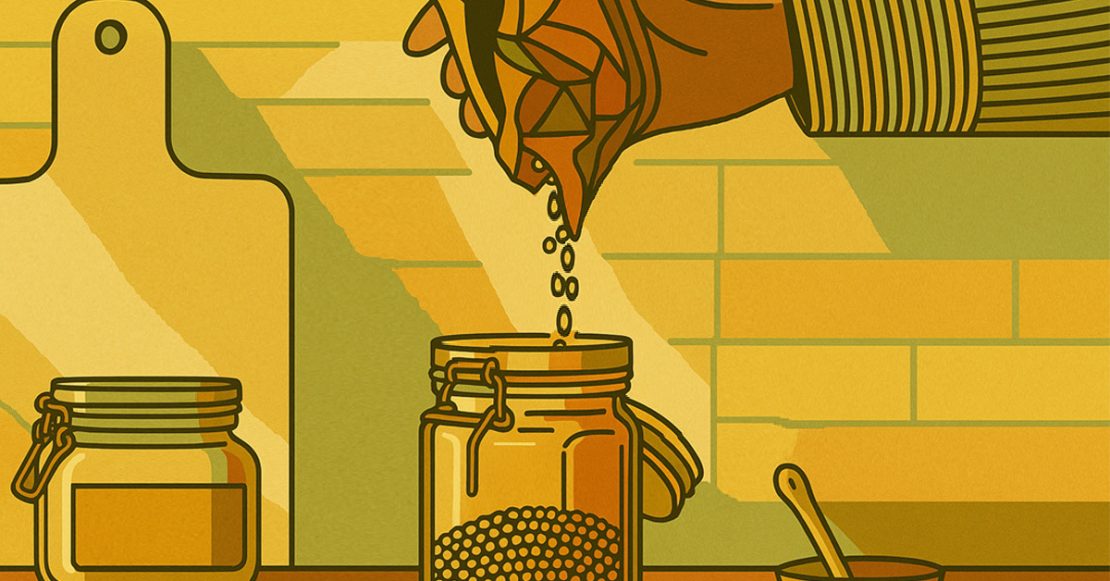At Revival Mill, we see every grain that enters our mill as carrying a responsibility. It is not enough for us to turn grain into flour. We must also understand how each variety performs, how it can be used, and how it might surprise us. To mill responsibly is to explore every dimension of the grain, not just the familiar ones.
Bread is the obvious starting point, but it is far from the only outcome. Milling gives us direct access to the raw potential of wheat, sorghum, oats, and corn. Fermentation allows us to unlock even more of that potential. Together, milling and fermentation reveal the full scope of what grains can become.
Our First Encounter with Grain Fermentation
Before we began experimenting at the mill, we tried fermentation in our own kitchen. Our first attempt was rejuvelac, a tangy, lightly effervescent drink made by soaking sprouted grains in water. It is often used as a starter for other ferments.
That first batch was successful, but it was unnerving. Watching plain grain and water cloud, fizz, and sour over days at room temperature went against everything we were used to in the kitchen. It felt uncertain to trust microbes with the process.
Yet the result was undeniable. The water had transformed into something alive with flavor and acidity. That small success shifted how we saw grain. It showed us that milling was only one way to unlock its potential. Fermentation was another, and together they opened doors we had not considered before.
Why Fermentation Belongs at the Mill
Bread already showed us the beauty of fermentation. Rejuvelac revealed that grains could transform in ways far beyond the oven. Grains are built from starch and protein. Microbes break these down into sugars, amino acids, and flavor compounds. What begins as starch and bran becomes sweetness, umami, acidity, and depth.
Owning a mill makes this connection impossible to ignore. With access to fresh grain every day, we see it not just as flour for baking but as a living ingredient with multiple paths of expression. Milling makes grain available. Fermentation gives it new life.
Our Experiments in Grain Fermentation
That early rejuvelac gave us confidence to expand. Some of the projects that followed include:
- Sweet Corn and Oat Gochujang: Made with peppers from our garden, this paste brought together layered sweetness, heat, and umami. It showed us how local grains could step into roles often filled by rice or barley.
- Sorghum “Shoyu”: With 100 percent high-protein sorghum, we created a seasoning sauce without wheat or soy. The sorghum carried the fermentation on its own, developing into something dark, savory, and surprisingly complex.
- Fermented Bran Pickles: Inspired by the Japanese practice of nukadoko, we built a live culture of fermented bran for pickling vegetables. Bran, often overlooked as a byproduct, became the foundation for probiotic-rich pickles that proved every part of the grain has value.
Each experiment began with the same question: if we already mill this grain into flour, what else can it do?
What This Means for the Kitchen
For a home baker, fermentation is an invitation to see flour differently. Bread is one path, but there are others: condiments, sauces, pickles, and drinks. For chefs, it expands the palette of flavors available, rooted in the same grains already on the shelf.
For us, these experiments are part of our responsibility. If a grain makes it into our mill, we believe we should understand its full versatility.
Closing Thoughts
That first jar of rejuvelac was humble, but it was also a turning point. It reminded us that grain is alive with possibility, and that milling is only the first step in a longer journey.
At Revival Mill, we continue to explore these paths not for novelty, but because it feels necessary. Grain deserves to be understood in all its forms, from the loaves on our tables to the sauces, pickles, and ferments that expand what food can be.
